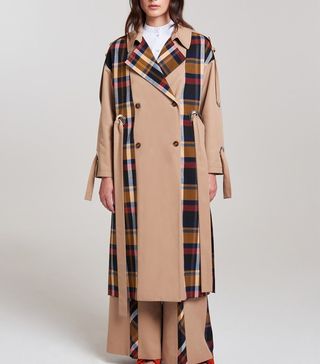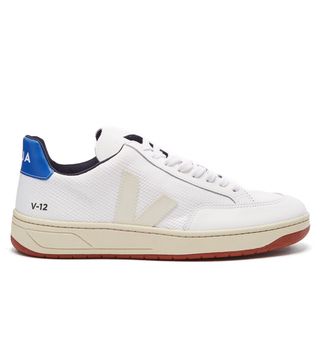Do We Need to Give Up on Trends in Order to Take Sustainability Seriously?

Trends and sustainability are often considered mutually exclusive. Ethical fashion was historically accused of being too expensive and inferior in design; however, there's now an army of brands fighting to change this outdated perception. Reformation famously calls itself the next-best option after being naked, and Emma Watson is one of the most stylish women in the world, only wearing brands with an ethical mission statement. This week at London Fashion Week the British Fashion Council have a positive fashion exhibition, introducing new brands and practices. All this considered, do we need to give up on trends in order to take sustainability seriously?
I can tell you now that there isn't a simple answer. Ethical fashion is complex—an initiative like H&M's recycling scheme is great, but this alone isn't going to solve anything overnight. Thinking more about our consumption, and taking steps (however big or small) is ultimately going to make a real difference. "Without a doubt, a change in mindset is what is needed," say Ella Grace Denton and Jemma Finch, the pair behind the clothes-swap initiative Stories Behind Things.
"We focus on fashion as something we can love and will also last—something that's timeless and not thrown away after just one wear," they continue. "Our focus should be on individual style and expression rather than mimicking trends. Style is about the individual. By buying into trends, we're simply buying into an industry's business model. By consuming fashion that's both meaningful and made in a way that aligns with our personal beliefs, what we wear becomes a true expression of the self."
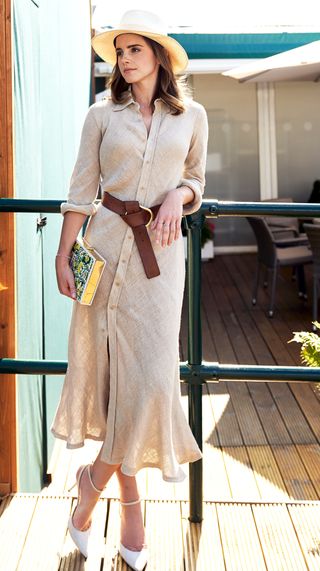
Emma Watson has become the unofficial face of sustainable fashion.
Scandinavian designers are leaders in the sustainable sphere, and Rebecca Thandi Norman, editor of Scandinavia Standard, says that this is a response to the consumer demands in this region: "People here are concerned with sustainability as an aspect of everything, from food to furniture. Fashion is such a major part of consumer culture, so it follows that it needs to be taken into account when discussing sustainability. I also think that design is all about problem solving, and Scandinavians are very good at design in this way."
"If textile waste and water waste and unethical labor practices (and many other things) in the fashion industry are the problem, how do we begin to solve it?" she continues. "From a market perspective, consumers in Scandinavia are used to buying a few long-lasting things as opposed to many disposable things (which is not to say fast fashion isn't a big industry here—it is). They're also willing to pay for quality. Those are conditions you need if you're going to be successful as a sustainable fashion brand, so they've really been able to flourish here."
In the UK, we need to start behaving more like this Scandinavian consumer, really thinking about what we're buying, investing in quality pieces and questioning what we're wearing. Questioning things like the trend for PVC plastic handbags, for starters. Plastic pollution is a matter of urgent international concern, with a push to limit our use of single-use plastics. At the same time, however, last year plastic emerged as a key trend, thanks to cult items like Staud's PVC Shirley bag, Calvin Klein 205W39NYC's plastic-coated overcoat and Chanel's plastic bucket hats, with PVC handbags and shoes inevitably filtering down to the high street.
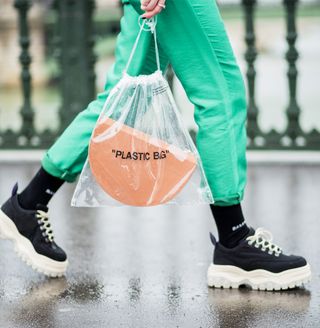
One of the many plastic bags at fashion week last year.
Trisha Brown, Greenpeace Oceans campaigner, previously told Who What Wear that fashion's adoption of PVC is quite surprising: "Of all the different types of plastic in the world, PVC is the most environmentally damaging. PVC production facilities generate hazardous chlorinated wastes, some of which are inevitably released into the surrounding environment. Plus PVC often contains toxic additives such as phthalates, which are toxic to wildlife and humans." Stylist Rebecca Corbin Murray criticised the industry for glamorising virgin plastic, posting a picture of Céline and Burberry's plastic-bag handbags on her Instagram page, with the caption: "The disappointing swan song of two of the most beloved, innovative and iconic designers of our generation."
"I don't think it's possible to truly be trendy while also being sustainable," Norman argues. "A huge part of following trends is the constant consumerism, which is antithetical to sustainable dressing. Of course there are ways to get creative and continually change what you already have to match the trends. I think that's why people who try to dress more sustainably develop an individual style, or a uniform of sorts, that they're comfortable in from one year to the next. Of course, as the saying goes, 'Everything that's old becomes new again' in fashion, so the most sustainable way to dress on-trend is to buy second-hand or vintage."
Isabel, Who What Wear's former social media editor, is my daily reminder that trends and sustainability aren't mutually exclusive. She can spot a micro-trend faster than anyone I know, and wears the beaded bags, hair clips and fun accessories you see all over Instagram, but she thinks about every single purchase she makes. "The biggest myth is that shopping sustainably means only buying expensive things that are 'made sustainably,'" she tells me. "While there are tons of amazing brands offering beautiful pieces at higher (but fair trade) price points, shopping sustainably also means two more options. One, think twice before buying something—choosing not to buy something is shopping sustainably. When you do decide to buy anything, take care of it, mend it, and love it. And two, try to avoid buying new."
There are so many sources to investigate and shop from in comparison to a year ago. One big shift over the past 12 months has been the increase in renting clothes—HURR Collective is offering millennials the same flexibility and engagement as seen in the likes of Airbnb, Uber and Spotify, but for their wardrobes. "Before I left the corporate world, I'd watched the massive rise of the sharing economy that's impacted all areas of our day-to-day lives. As one of the world's most polluting industries, fashion was the next big industry that was ripe for disruption," explains Victoria Prew, co-founder and CEO at HURR Collective. "We're building the Airbnb of fashion to allow women to make money from the pieces they already own and also rent designer items for a fraction of the retail price. Extending the life span of your clothes is one of the best things you can do to reduce the environmental impact of your wardrobe."
Shop Sustainable, Trend-Led Pieces

These are vegan, produced in limited quantities in L.A. and even feature deadstock metal buckles.
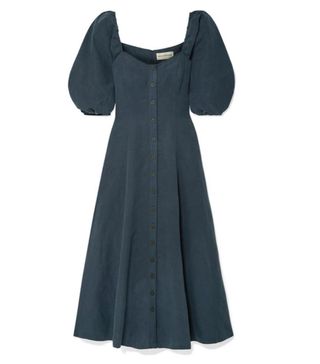
Mara Hoffman is one of the leading sustainable designer brands.

This is a hard-working, organic and Fair Trade piece that doubles up as a jacket.
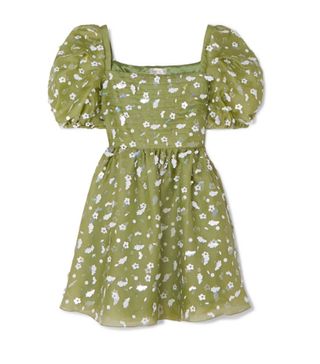
This is from Net-a-Porter's new dedicated sustainable edit.
These pieces prove that dressing sustainably isn't so terrifying.
Opening Image: @thestylestalkercom
This piece was published at an earlier time and has since been updated.
